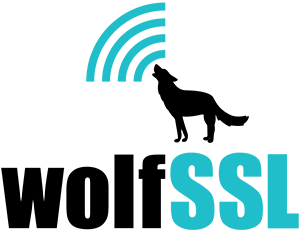Now compatible with AMD processors, enabling the intelasm option for wolfSSL will utilize expanded capabilities of your processor that can dramatically enhance performance. The instruction sets leveraged when the configure option is enabled include AVX1, AVX2, BMI2, RDRAND, RDSEED, AESNI, and ADX. These were first introduced into Intel processors and AMD processors have started adopting […]
Read MoreMore TagCategory: Uncategorized
wolfCrypt FIPS Certificate #3389
The National Institute of Standards and Technology (NIST) has completed the validation of the wolfCrypt module version 4 for an updated Federal Information and Processing Standards (FIPS) 140-2 certificate in addition to its previous FIPS 140-2 certificate. This new certificate includes updated and more secure algorithms added to the wolfCrypt module’s boundary, some of which […]
Read MoreMore TagDDC-I and wolfSSL Announce Availability of wolfSSL 4.0 Embedded SSL Library for Deos Safety-Critical RTOS
DDC-I, a leading supplier of software and professional services for mission- and safety-critical applications, and wolfSSL, a leading provider of TLS cryptography, today announced the availability of version 4.0 of the wolfSSL embedded SSL library and products for DDC-I’s Deos DO-178 safety-critical real-time operating system. The Deos RTOS, equipped with wolfSSL 4.0, enables avionics developers […]
Read MoreMore TagwolfSSL Integration with curl and tinycurl
wolfSSL’s embedded SSL/TLS library comes with support for many tools and libraries, one of which is curl. curl is a computer software project that produces two products (libcurl and curl) that are used for transferring data using various protocols. In addition to providing support and maintenance for curl, wolfSSL will also be integrating the curl […]
Read MoreMore Tagcurl on ECUs
Do you have the need to transfer information to or from ECUs or similar embedded devices? Then look no further than using curl! In short, curl is a tool to transfer data from or to a server using various protocols. The curl library excels with embedded, RTOS, and also large-scale devices, as does the tinycurl […]
Read MoreMore TagwolfSSL Zephyr Port
With wolfSSL 4.0.0, the wolfSSL embedded SSL/TLS library comes with many new features and improved functionality. Among these features is the addition of a port to the Zephyr Project – a scalable real-time operating system (RTOS) supporting multiple hardware architectures, optimized for resource constrained devices, and built with safety and security in mind. wolfSSL’s Zephyr […]
Read MoreMore TagwolfSSH SSHv2 Server Library
wolfSSL provides many products, services, and support for almost all things TLS and embedded. One of these products provided by wolfSSL is wolfSSH – an SSHv2 server library! wolfSSH is wolfSSL’s own open-source and dual-licensed implementation of the SSHv2 protocol. It’s a server library written in ANSI C and targeted for embedded/RTOS/resource-constrained environments. It’s fast, […]
Read MoreMore TagwolfSSL Asymmetric Cryptography Support
One of the software libraries that is provided by wolfSSL includes the wolfCrypt crypto engine. wolfCrypt includes support for single-precision math, ECC, extensive list of supported ciphers, key/certificate generation, and also Asymmetric cryptography! Asymmetric cryptography differs from regular (synchronous) cryptography that instead of using a singular shared key, they will use a key-value pair. Popular […]
Read MoreMore TagwolfSSL DTLS Session Export
The wolfSSL embedded SSL/TLS library supports features not only pertaining to TLS, but DTLS as well! A prime example of a DTLS feature supported by wolfSSL is DTLS session exporting. This allows for serializing and sending a DTLS session immediately after the handshake has been completed. The ability to export the session after a handshake […]
Read MoreMore TagwolfSSL Adds Support for the Deos Safety Critical RTOS
Are you a user of Deos? If so, you will be happy to know that wolfSSL recently added support for Deos RTOS and added TLS client/server examples to the wolfSSL embedded SSL/TLS library for Deos! Deos is an embedded RTOS used for safety-critical avionics applications on commercial and military aircraft. Certified to DO-178C DAL A, […]
Read MoreMore Tag
